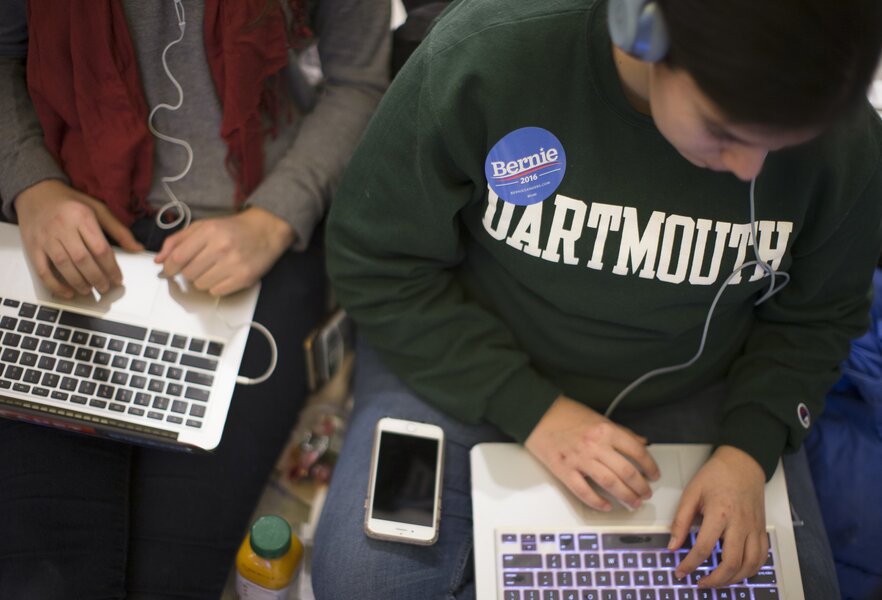Why the calendar could be Bernie Sanders' greatest Iowa asset
Loading...
This year’s Iowa caucus is on Monday Feb.1, a date that may sound like music to Bernie Sanders’ ears.
The last two Iowa caucuses, in 2008 and 2012, both took place on Jan. 3. Not only do candidates have a full month longer to campaign in the swing state of Iowa this year, but the election will also take place when college students are back on campus from winter break.
Millennials will represent more one-third of the US popular vote in the 2016 election. There will be 93 million millennials of voting age and 81 million millennials who are eligible, accounting for 33 percent of all voters, according to a report by the Center for American Progress. But Democrats already know how important the millennial vote is, because the success of President Obama’s 2008 campaign can be partially attributed to young voter turnout.
And this demographic seems to be Mr. Sanders’ to win. In a December poll by Harvard University’s Institute for Politics, 53 percent of Democratic voters in college prefer Sanders and only 19 percent prefer former Secretary of State Hillary Clinton. Sanders also beats Ms. Clinton in the overall 18 to 24 demographic, with a 44 percent favorability rating over Clinton’s 30 percent.
Bernie’s connection with the younger voters isn’t hard to understand. According to a 2015 survey by The Panetta Institute for Public Policy, college-age millennials care the most about the environment, affordable college education, and equal economic opportunity. As Sanders reiterated in Sunday night’s debate, he consistently repeats these as his top three presidential priorities.
The only problem? Millennials don’t actually vote.
In 2012, only 45 percent of voters between the ages of 18 and 29 participated in the presidential elections, the US Census Bureau reports. This is far less than every other age demographic. The voting population between 30-44 participated at almost 60 percent, 45-64 participated at almost 68 percent, and 65 and older participated at 72 percent.
And on Jan. 3, 2008 – during Obama’s first presidential election and a golden year for millennial voters – those under 30 accounted for only 22 percent of Iowa caucus-goers.
But millennials are more likely to vote, however, if they are surrounded by their peers on campus with the voting resources that a college provides.
“We’re organizing on I think 28 campuses now,” Sanders’ Iowa state director Pete Becker told ABC News. “We’re not just paying attention to the big ones, we’ve got little schools that we’ve got active organization on, and we’re also organizing not just students, but teachers, administrators and everyone else who lives there…”
Navigating the voting registration process can be complicated. The Campus Vote Project suggests that 1.7 million voters in 2008 between the ages of 18 and 24 didn’t vote because of practical problems, such as knowing where or how to register.
Sanders’ campaign has taken steps of its own to encourage student turnout. Many college students are isolated on campuses without cars, so the Sanders’ campaign launched the RideWithBernie app which helps coordinate carpooling to the polls. Supporters can sign up as either a driver or a passenger, and ride with other students on election day.






